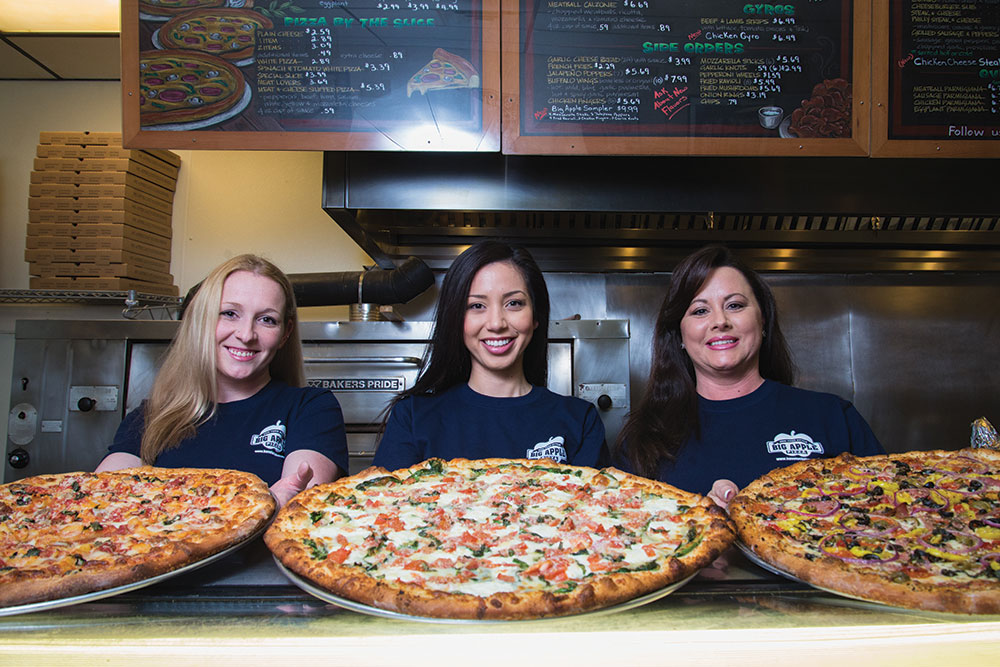It’s hard to find good help these days—and that’s not just a tongue-in-cheek cliché. It’s an increasingly common lament from pizzeria owners and other restaurateurs. With unemployment low nationwide and some cities and states raising the minimum wage, many pizzeria owners are struggling to attract high-quality employees they can afford—while others find they need to pay more to retain the ones they’ve got. And general operating expenses—from food costs to rent—never seem to go down, just up. So what’s a struggling operator to do?
The answer is simple but not easy: raise your prices. Many pizzeria operators feel they’re stuck with declining profit margins because customers will balk if menu prices go up. But that kind of thinking can lead to financial ruin, top operators tell PMQ.
In this exclusive video interview with PMQ, Romeo’s Pizza founder Sean Brauser explains how to raise your prices.
“We have to factor in our costs,” John Arena, co-owner of Metro Pizza in Las Vegas, says. “That’s the biggest mistake people in our industry make. They’re looking at the competition and saying, ‘I have to charge what they charge.’ I’m not interested in what the guy down the street is charging. I have to base what I charge on my expenses.”
Believe us, you won’t be the first restaurant in town to hike your prices. Jonathan Maze of Nation’s Restaurant News reported that U.S. restaurants had raised their menu prices by an average of 2.7% as of January 2016. That was nearly twice as high as the overall inflation rate of 1.4% at the time.
Writing for PMQ about price hikes in 2014, Sean Brauser, founder and CEO of Romeo’s Pizza and Pizzafire, noted that customers make their buying decisions based on perceived value. “The greater the perceived value, the more they will pay for it,” he wrote. “So when it’s time to think about raising your prices, you must first ask yourself this question: How much perceived value does your pizza carry? Have you spent your marketing dollars building up that value perception or tearing it down?”
If you’re constantly competing strictly on price, you’re putting yourself on par with Papa John’s and Domino’s, and that’s a battle you can’t win. So how do you go about raising prices? “Some businesses like to raise prices slowly or in multiple steps, while others opt to raise prices all at once,” Brauser observed. “There really is no ‘right’ answer.” But here’s how to get started:
1. Poll your customers. Using your email database or a Facebook poll, ask customers to list the top three reasons why they eat at your pizzeria. If the majority list price as the No. 1 or No. 2 factor, you’ll want to raise your prices gradually over a couple of months. If price is No. 3 or doesn’t even make the list, one larger price increase may do the trick.
2. Work on positioning your brand. In all of your marketing materials, position your pizzeria’s brand around high quality and high value rather than low price. Make sure your special offers and coupons maintain that brand position—rather than undermine it—in the consumer’s perception. “Position yourself as a premium brand, and you can raise your prices without worry,” Brauser wrote. “Position yourself as a discount brand or an in-between, and you will have a lot more trouble with a price increase.” For coupons and specials, focus on family packs and multi-item bundles rather than big, slashing discounts that scream, “CHEAP PIZZA HERE!”
3. Add some extra pennies. “If you add .99 to many item prices, use that .99 figure throughout your menu,” Brauser wrote. “If you don’t use the .99 figure, raise your prices so that you can capture those extra cents on every item. Imagine getting an extra nine cents on every order merely by ending the price in .99 instead of .90. If you average 500 orders per week, that’s an extra $45 dollars a week or $2,340 per year of pure profit.”
4. Start a loyalty program. Boost your customers’ value perception by offering loyalty rewards to regulars. Make sure to offer worthwhile rewards, such as a point for every dollar spent, with a free-food offering that kicks in quickly.
Check out these five expert tips for creating a moneymaking customer loyalty program.
5. Control your food costs. If you’ve already positioned your pizzeria as a cheap-pizza option and can’t change it, get your food costs under control. No more free-throwing that expensive cheese! Determine the exact portions for every ingredient on every pizza, post charts as visual aids that your employees can easily follow, and weigh out everything on a scale.
6. Perform a cost-price analysis. Weed out those menu items that don’t make you any money. Is that seafood pasta entrée a low-margin, low-volume seller? Get rid of it. If you’ve got a high-margin item that just doesn’t sell well, try positioning it more prominently on the menu and tweaking your description to make it sound more appealing. Also try offering incentives to encourage your servers to sell more of the high-margin items.

The National Restaurant Association recommends reviewing your menu prices at least twice a year—or even quarterly. Pay close attention to what’s selling and what’s not selling and, just as importantly, how every item impacts your bottom line. Then change your prices again as needed with that information in mind.
John Arena believes pizzeria owners need to stop selling themselves—and their food—short. “Considering the passion and skill and hard work that goes into operating a pizzeria, not to mention the tremendous risk and the physical and emotional wear-and-tear on you and your family, we’re all underpaid,” he says. “Pizza should be more expensive than it is. And you can definitely quote me on that.”















